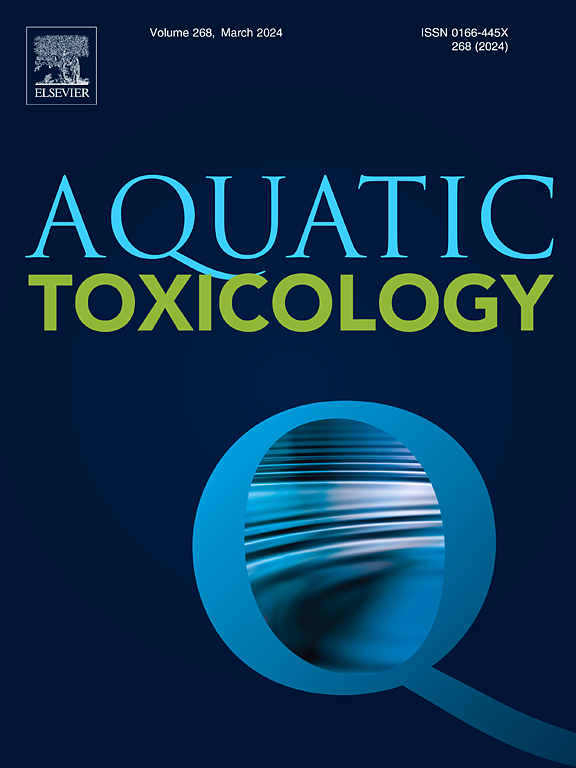水生生态系统中全氟和多氟烷基物质(PFAS)的污染发生率、生物积累、生物放大和毒性效应综述
IF 4.3
2区 环境科学与生态学
Q1 MARINE & FRESHWATER BIOLOGY
引用次数: 0
摘要
全氟和多氟烷基物质(PFAS)在环境介质和生物系统中持续积累,导致显著的毒理学效应。尽管近年来对PFAS的研究不断扩大,但对其在水生环境和生物群中的浓度分布及其毒理学效应的系统综述仍然很少。此外,现有文献缺乏对多种水生环境和生物的系统分析。本文综述了水生环境中PFAS的污染水平。系统分析了浮游生物、游泳生物和底栖生物的生物积累,包括生物积累因子(BAF)、生物放大因子(BMF)、营养放大因子(TMF)和生物群-沉积物积累因子(BSAF),并评估了对水生生态系统的潜在毒性影响。本研究旨在为PFAS的环境规制与管理提供理论支持。并为未来的研究提供数据参考和潜在的研究方向,从而促进pfas相关研究和政策制定的推进。本文章由计算机程序翻译,如有差异,请以英文原文为准。

Incidence of pollution, bioaccumulation, biomagnification, and toxic effects of per- and polyfluoroalkyl substances (PFAS) in aquatic ecosystems: A review
Per- and polyfluoroalkyl substances (PFAS) are persistently accumulated in both environmental media and biological systems, leading to significant toxicological effects. Although research on PFAS has expanded in recent years, systematic reviews on its concentration distribution in aquatic environments and biota, as well as its toxicological effects, remain scarce. Moreover, existing literature lacks systematic analyses of diverse aquatic environments and organisms. This review investigates the contamination levels of PFAS in aquatic environments. It also provides a systematic analysis of bioaccumulation in planktonic, swimming, and benthic organisms, including bioaccumulation factors (BAF), biomagnification factors (BMF), trophic magnification factors (TMF), and biota-sediment accumulation factors (BSAF), and evaluates the potential toxic effects on aquatic ecosystems. This study aims to provide theoretical support for the environmental regulation and management of PFAS. Additionally, it seeks to offer data references and potential research directions for future studies, thereby promoting the advancement of PFAS-related research and policy development.
求助全文
通过发布文献求助,成功后即可免费获取论文全文。
去求助
来源期刊

Aquatic Toxicology
环境科学-毒理学
CiteScore
7.10
自引率
4.40%
发文量
250
审稿时长
56 days
期刊介绍:
Aquatic Toxicology publishes significant contributions that increase the understanding of the impact of harmful substances (including natural and synthetic chemicals) on aquatic organisms and ecosystems.
Aquatic Toxicology considers both laboratory and field studies with a focus on marine/ freshwater environments. We strive to attract high quality original scientific papers, critical reviews and expert opinion papers in the following areas: Effects of harmful substances on molecular, cellular, sub-organismal, organismal, population, community, and ecosystem level; Toxic Mechanisms; Genetic disturbances, transgenerational effects, behavioral and adaptive responses; Impacts of harmful substances on structure, function of and services provided by aquatic ecosystems; Mixture toxicity assessment; Statistical approaches to predict exposure to and hazards of contaminants
The journal also considers manuscripts in other areas, such as the development of innovative concepts, approaches, and methodologies, which promote the wider application of toxicological datasets to the protection of aquatic environments and inform ecological risk assessments and decision making by relevant authorities.
 求助内容:
求助内容: 应助结果提醒方式:
应助结果提醒方式:


